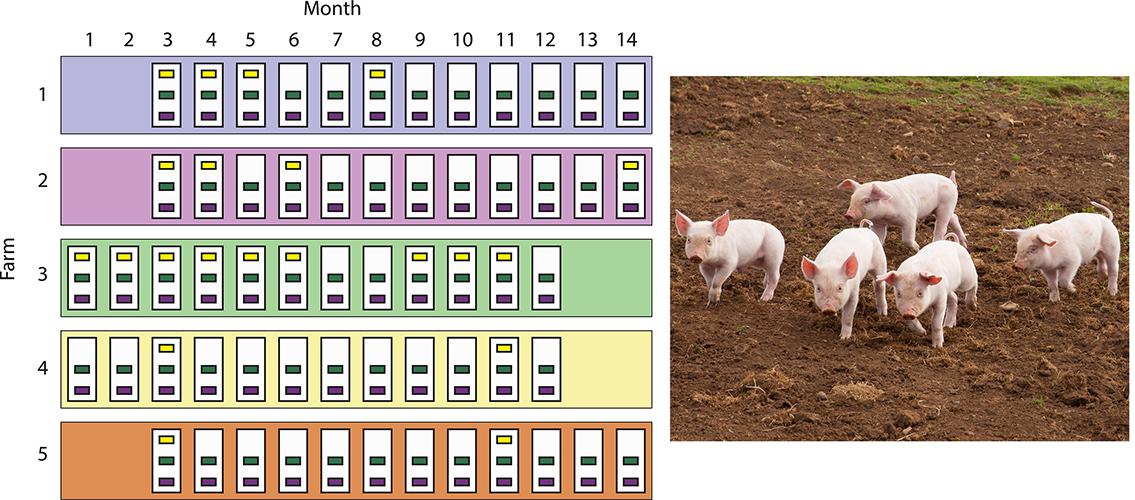
The influenza A virus (IAV), which causes flu, is extremely common, and affects humans, birds, and pigs. In recent years, there has been a great deal of concern about influenza viruses mutating to a form that can jump from pigs or birds and cause a human pandemic. Researchers are studying the influenza virus in hopes of being able to control future outbreaks.
Three MSI Principal Investigators from the Department of Veterinary Population Medicine at the College of Veterinary Medicine – Associate Professor Montserrat Torremorell, Associate Professor Andres Perez, and Professor Srinand Sreevatsan - are co-authors on a paper that studied the incidence of influenza A virus in three subpopulations of herds of breeding pigs. The three subpopulations included gilts (young female pigs who have not borne a litter) who had been on the breeding farm for less than four weeks, called “new gilts” in the paper; gilts who had been on the farm longer than four weeks; and piglets less than 21 days old. Nasal swabs were taken of the pigs on a monthly basis over a period of a year. These swabs underwent genetics testing and the results were compiled using statistical software. The results showed that new gilts and piglets had a higher probability of testing positive for IAV than gilts. The results also showed that there was a seasonal component to influenza infection in pigs. This provides evidence that the best times to use infection-control strategies are before gilts are transferred to the farm, and to piglets before they are weaned. The table below shows results from the multivariate analysis (mixed effects model). Source: A Diaz et al., PLoS One, DOI: 10.1371/journal.pone.0129213.
The paper appeared in the journal PLoS One in June 2015: Andres Diaz, Andres Perez, Srianand Sreevatsan, Peter Davies, Marie Culhane, and Montserrat Torremorell. 2015. Associations Between Influenza A Virus and Pigs Subpopulations in Endemically Infected Breeding Herds. PLoS One, DOI: 10.1371/journal.pone.0129213. The paper appears on the journal website.
Professor Perez is using MSI to develop and implement near-realtime systems for the prevention and mitigation of disease impact. Professor Sreevatsan uses MSI to define the molecular mechanisms by which bacteria and viruses establish infection, and to improve current diagnostic tools. Professor Torremorell’s MSI work focuses on the molecular diversity and evolution of swine influenza A virus. Lead author Andres Diaz is in the Torremorell MSI research group. Associate Professor Marie Culhane (Veterinary Population Medicine) is a collaborator with the Torremorell group.
Image description: (Left) Five swine-breeding herds (largest rectangles, 1 to 5) in the Midwest were sampled between November 2011 (month 1) and December 2012 (month 14). White rectangles represent sampling visits (12 per farm), and the smallest rectangles (n – 141) indicated the groups of pigs sampled. Groups are colored based on pig subpopulation: yellow (new gilts, n=21), green (gilts, n = 60), and purple (piglets, n = 60). Missing group-rectangles indicated that there were no new gilts on that visit. Groups were assumed nested within sampling events, and sampling events were assumed nested within farms. Left image and description, A Diaz et al., PLoS One, DOI: 10.1371/journal.pone.0129213.
posted on June 1, 2016